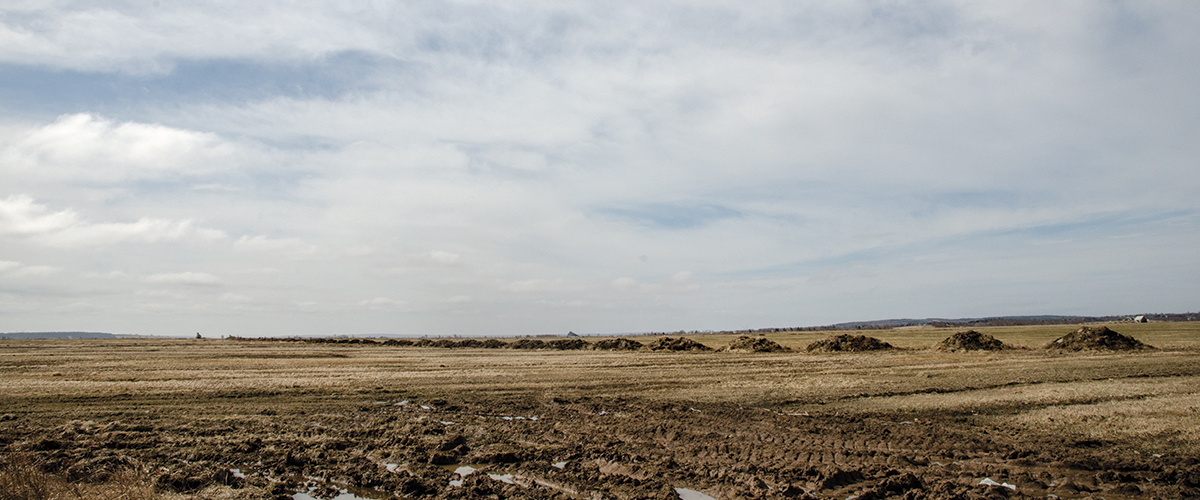The shortwave radio towers in Sackville, New Brunswick, Canada, had been built during World War II. Sheilah Wilson had seen them plenty of times as a child, returning to her home in Nova Scotia after visiting family in the States, and she anticipated their blinking red lights welcoming her as she entered Sackville, home of Mount Allison University, where she earned her undergraduate degree.
But when she drove into Sackville in May to begin a residency at Struts Gallery and Faucet Media Arts Centre, Wilson knew something was missing. Just a few months prior, the government had begun to remove the towers in an effort to cut back on upkeep costs in the Internet age. Their absence made Wilson think about what those towers meant to her and to the residents of Sackville. “I was thinking of the body as its own transmission site, where emotion and memory are projected outwards,” she says, “always holding us in subjective relation to a space.”
During her residency, Wilson—whose photography often incorporates community stories—put an ad in the local paper asking for 13 volunteers to take her to the spots from which they most remembered seeing the towers. Wilson used the photographs and stories to create a series of postcards called “Body Transmission Towers,” with each postcard representing one of the towers. Wilson’s photos probe into the loss of the familiar, and explore the ways in which language and memory retain geography long after the structures themselves have disappeared.
Matt Tunnacliffe (photo above)
This is the High Marsh Road, which was the original path cut across the marsh, long before the railway or the Trans-Canada. That is why the original town of Sackville grew up where it was. Then the railway and the highway changed all that, and Sackville migrated to where it is today. Feels like this is something of Canadian history. We are at the parking spot next to the covered bridge. This is the only covered bridge in the area—there is one closer to Memramcook, but this is by far the closest covered bridge to Sackville. This was a great place to come out and look at the towers. The towers were about a kilometer away when they were standing. They were up against the horizon. It was a great view, at dark, and the lights would be glowing next to the looming covered bridge. When we were students, it was a favorite spot; and this last year, just before the towers came down, I had a son, and sometimes he wouldn’t sleep so well. I would drive him around, and sometimes I would drive him out here and watch the towers, and it was a great spot.
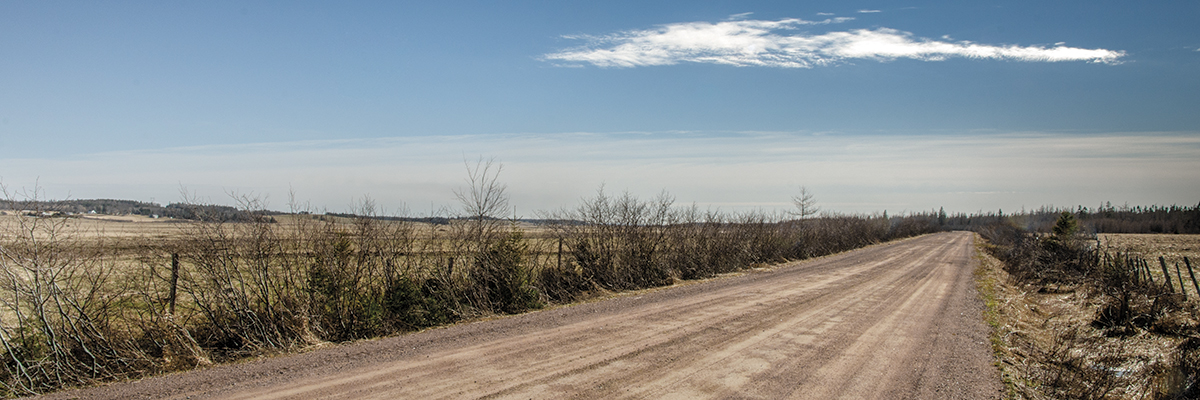
Thaddeus Holownia
We are just east of where the towers would have been peeking over the trees. The view I remember [is of] the towers from my studio; it was the blinking red lights of the nighttime towers above the tree line of the floating bog, which is down by the High Marsh Road, Jolicure corner. What I think about mostly with the towers not being there is that there is this vertical gauge of the landscape against this incredible flat horizon that is going to be missed by people who have lived here for any length of time, because that would have been visible in everyone’s lives from so many locations and from such great distances. If you didn’t live here for a while you wouldn’t even think of it. They were big. And they were seen from great distances because this place is so very flat.

Kaeli Cook
We are at my pottery studio at 37 Squire Street. My huge window at the back of my studio looks out onto the marsh and the radio towers. I sat there and worked every day, looking out at them. The towers were part of the landscape, and I miss seeing them there. Especially at night. When I was working at night, the red lights would be blinking on and off in the distance, softly. It was nice to have them as part of my landscape every day. They never stood out, but every once in a while, I do notice they are gone. I definitely notice at night, because there aren’t any glowing lights.
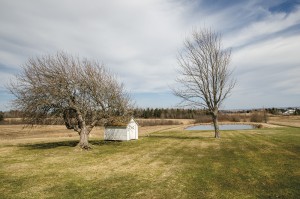
Bea LeBlanc
I can just remember when I was about 5 years old. I was living in this area and seeing the towers, and [I remember] being amazed that you could turn the radio on, and it was supposed to be coming from there. I don’t remember how many towers [there were] at that time; it would have been 1940. It wasn’t the grand thing it turned out to be. They were there, out that way, and now it is all wooded over. It used to be a clear view.
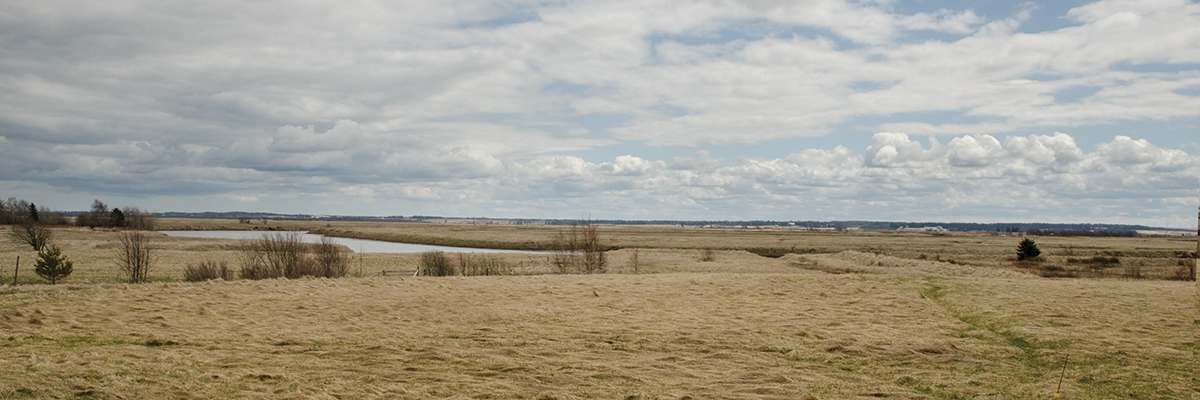
Paul Henderson
I spent a couple years living out here with a variety of people and had a lot of really great times. It was a really interesting time with a lot of people coming and going. I built a half-pipe here with Bucky Buckler that a bunch of us used for a few years. Also this was the site of the Sappyfest after-party. From here you can see the ramp, the hay fields, the Tantramar River, a neighbor’s field, and the radio towers beyond that. Those lights on the towers continued to blink, pulsing, just like the constant river sound of the highway. This giant architectural structure on the landscape, blinking, humming, and connecting Canada to the rest of the world, and vice versa, relaying these messages, bouncing them off the salt marshes and into the ionosphere, or some kind of sphere. I always found it to be kind of a poetic metaphor for what Sackville could be, here as this tiny little town.
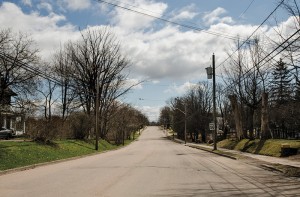 Jennifer Jarvis
Jennifer Jarvis
We are located on Bridge Street in front of Marshlands Inn. My memory of the towers is one day walking home from school, and it was the fall of the year. I noticed the towers at the end of Bridge Street; they just kind of popped up. So I stepped into the middle of the road to see if they lined up with the center, and they did. I thought it was fascinating. I guess it must have been the light that day or something, they looked like a beacon. I often think of that when I am at this spot; it does come back. One of those “aha” moments—something that is always there and then you notice it
The Voice of Canada
by Maureen Harmon
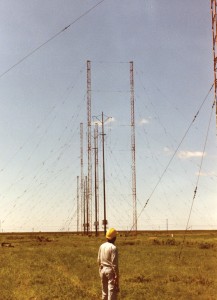
On Feb. 25, 1945, the “Voice of Canada” was born when the Canadian Broadcasting Corporation (CBC), later Radio Canada International (RCI), shortwave towers began operation. The idea was to allow Canada to weigh in on international issues, including the aftermath of World War II and news stories surrounding the Cold War. Sometimes, as Dave Wheaton, a former employee of RCI tells it, Russian citizens depended on the shortwave broadcasts to learn the news coming out of their own backyards, as the Russian government worked to censor its own media behind the Iron Curtain.
But before Canada could become a part of the international broadcasting community, the Canadian government had to figure out where to put the 13 towers that would do the talking. Thaddeus Holownia, a photographer who has documented the towers, writes on his website: “Sackville, directly in the middle of Canada’s maritime provinces, was a perfect vantage point poised between the rest of Canada to the west, and Europe to the east. The salt marshes east of the town were very low and very flat, and the conductivity of the salt-steeped soil beneath the transmitters provided a powerful boost to outgoing signals.” In the end, the CBC spent more than two years constructing and testing the towers before it made that initial broadcast.
Wheaton, a resident of Sackville, headed to work at the towers in 1976 at the age of 17. He was the 39th employee. By the time he retired, there were only 11 remaining workers out on the salt marsh. During those years, he worked as a mechanical rigger, helping to maintain the 220 acres of land, the antennas, and the cables surrounding the towers, ensuring that the Voice of Canada went uninterrupted. It was his job to climb each of those 13 towers when they warranted attention, sometimes scaling the tallest at 437 feet. “I loved it,” he says. “I wouldn’t do anything else.” Wheaton retired in July of 2012, and the rest of the workers finished their jobs among the towers on Oct. 31 of that year. “That’s when she went silent,”
Wheaton says. It seems that Sheilah Wilson hit on something very real out in that vast open land of Sackville when she invited 13 volunteers to take her to the spots from which they most vividly remember seeing the towers. She then created postcards from their images and stories, and distributed them throughout the town.
“People say they were just landmarks,” says Wheaton. “But they weren’t just landmarks to me. They were my life’s work.”
“Just the other night, I was coming back from Amherst for the first time since they were gone,” Patt Belliveau, a local Sackville resident told Wilson. “I knew the towers weren’t there physically, but it was sort of spooky, like I felt they were still there.”

